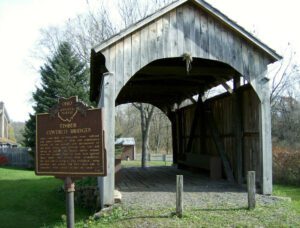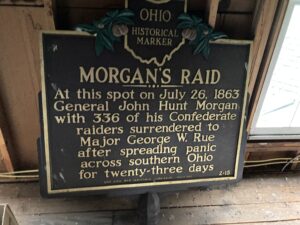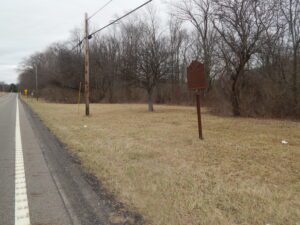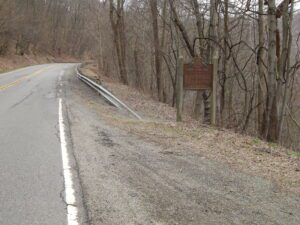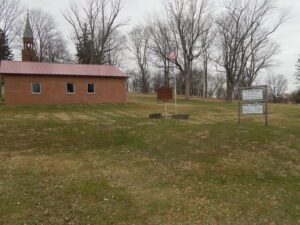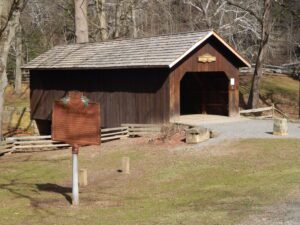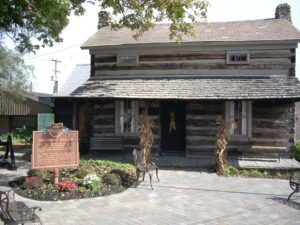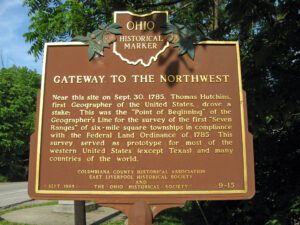, OH
This covered bridge, over Middle Run, Elkrun Township, Columbiana County, is the shortest covered bridge in the United States still standing on a once-used public highway, having a clear span of 19 feet and 3 inches. It is an example, rarely found covered, of the simplest, most basic truss design, the two-panel king post truss. It has withstood the rigors of time and traffic since the 1870s and stands in eloquent testimony of the fine craftsmanship of the early Ohio bridge builders.
, OH
At this spot on July 26, 1863 General John Hunt Morgan with 336 of his Confederate raiders surrendered to Major George W. Rue after spreading panic across southern Ohio for twenty-three days.
, OH
Southeast of this point are the Big and Little tunnels. They were links in the 73-mile Sandy and Beaver Canal which connected the Ohio River with the Ohio and Erie Canal. Shifts of Irish laborers worked night and day with hand drills and blasting powder to cut the 1,060-yard Big Tunnel which opened for commercial use in 1850 and was abandoned two years later, a victim of the railroad.
, OH
The first paper mill in Ohio and the Northwest Territory was established in the valley below in 1807 by John Coulter of Virginia, Jacob Bowman and John Beaver of Pennsylvania. The mill was in St. Clair Township on the East bank of Little Beaver Creek. Called “The Ohio Paper Mill,” the firm produced handmade rag paper in a stone building until the early 1830’s. The firm’s watermark was a spread eagle, the word OHIO and the initials of the proprietors, C B & B.
, OH
About a mile south in St. Paul’s Cemetery, the Reverend Father Edward J. Fenwick, “Pioneer Apostle of Ohio,” organized the first Catholic parish in northern Ohio. The first mass was celebrated in the log house of Daniel McCallister. A century and a half later the cabin was dismantled, moved here, rebuilt, and rededicated in May, 1967 as the Log Cabin Shrine of Dungannon.
, OH
This covered bridge stood in the 1870s over Middle Run, on State Route 154, between Lisbon and Elkton, Elkrun Township. It was converted to a storage shed and moved twice by the Elkrun Township Trustees. Mr. Malone, a covered bridge researcher, found the structure along the Pine Hollow Road and recognized it as a covered bridge. Restoration was completed in 1971.
, OH
Joshua Dixon selected this site in 1805 as the center for Columbiana. The first local post office, established at this museum location in 1809, pioneered free mail delivery in 1837. The museum, an early log home in the village, was moved here and restored in 1975 by community effort for use as a museum and Bicentennial headquarters. The annex was built in 1978.
, OH
Near this site on Sept. 30, 1785, Thomas Hutchins, first Geographer of the United States, drove a stake: This was the “Point of Beginning” of the Geographer’s Line for the survey of the first “Seven Ranges” of six-mile square townships in compliance with the Federal Land Ordinance of 1785. This survey served as a prototype for most of the western United States (except Texas) and many countries of the world.


